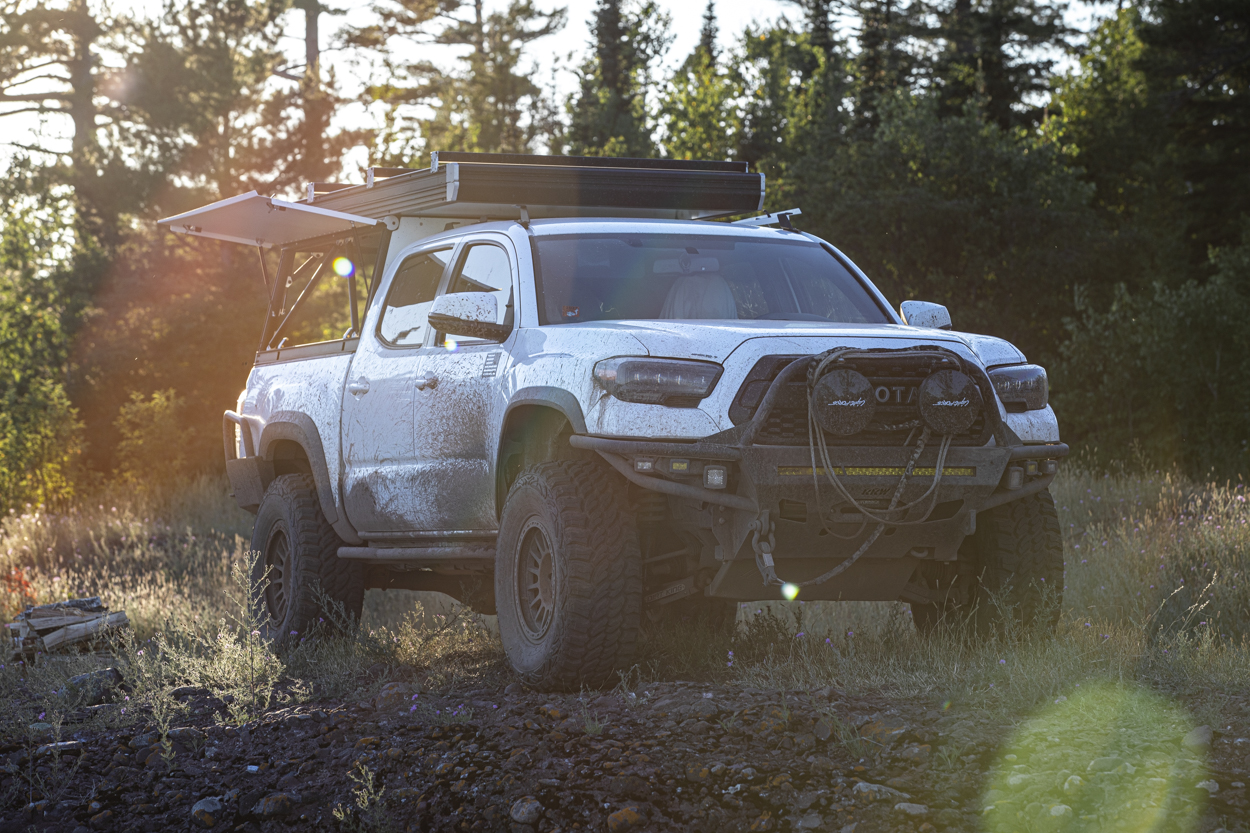
- GFC now offers a new camper model, the V2 Pro. Check out my post on all the new upgrades.
- They also have the V2 MAX models now. You can see those here.
I know what you’re thinking. Two campers? Who runs two of the same campers on two different Tacomas? Well, it’s not me. At least not exactly…
Back in early 2022, I took a road trip to Montana (GFC headquarters) to pick up my V2 on my 3rd Gen. It was a long standing goal of mine, going back to the early days of the V1, to put one on my truck. To me, these relatively lightweight wedge campers represent the ultimate overlanding setup. It was something that GFC pioneered over the years. Fast setup, organization, and options for customization.
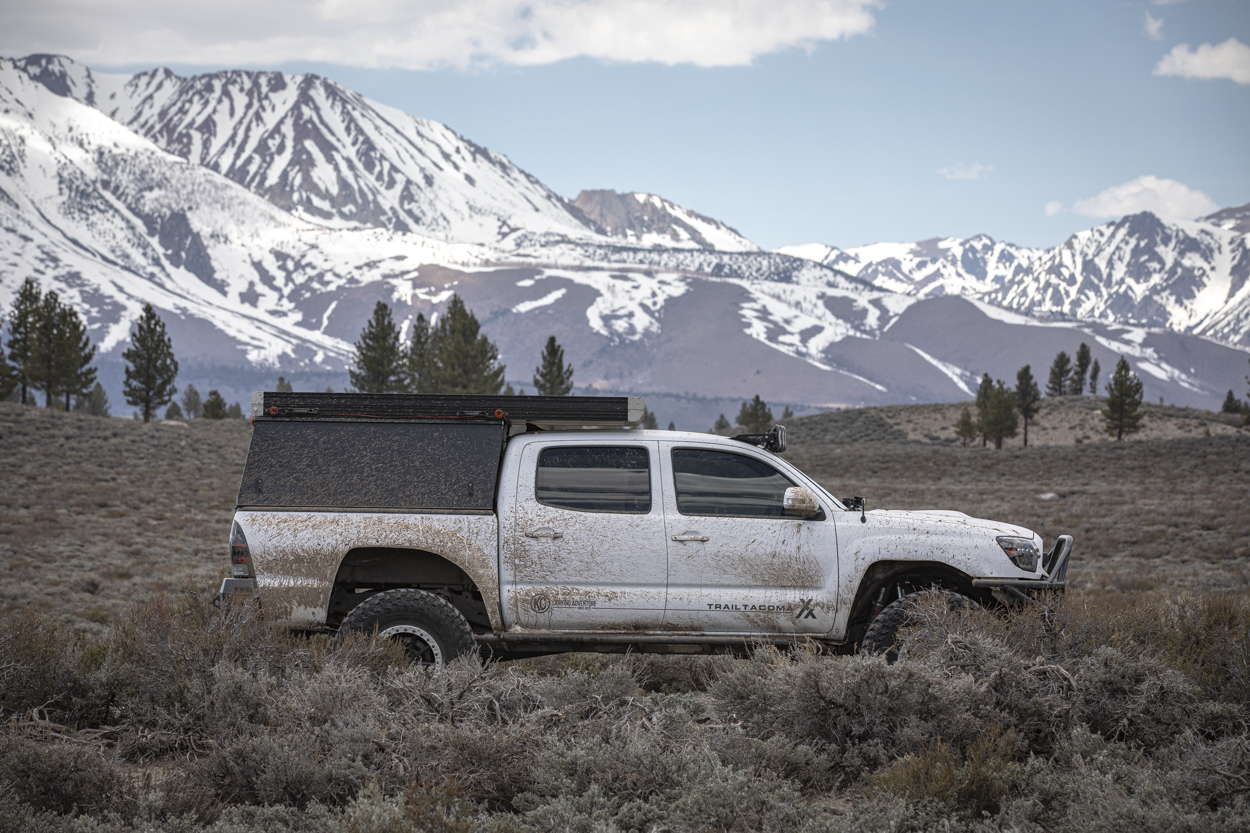
In mid 2022, Brenan picked up his V2 camper for his 2.5 Gen. Long story short, we work together closely and both ended up running one on our trucks. As more opportunities presented themselves, I’ve flown out several time to NorCal to wheel and we built tons of content together.
All in all, I probably used Brenan’s camper more than he did (he usually takes his 4Runner) and have over 75+ nights sleeping in and probably double the amount wheeling with these setups. That said, I feel very suited to speak with authority on the overall experience, reliability, and various ways to load out and use two of these long term.
This post will cover everything you might want/need to know, and my firsthand experiences.
Table Of Contents
Company Overview
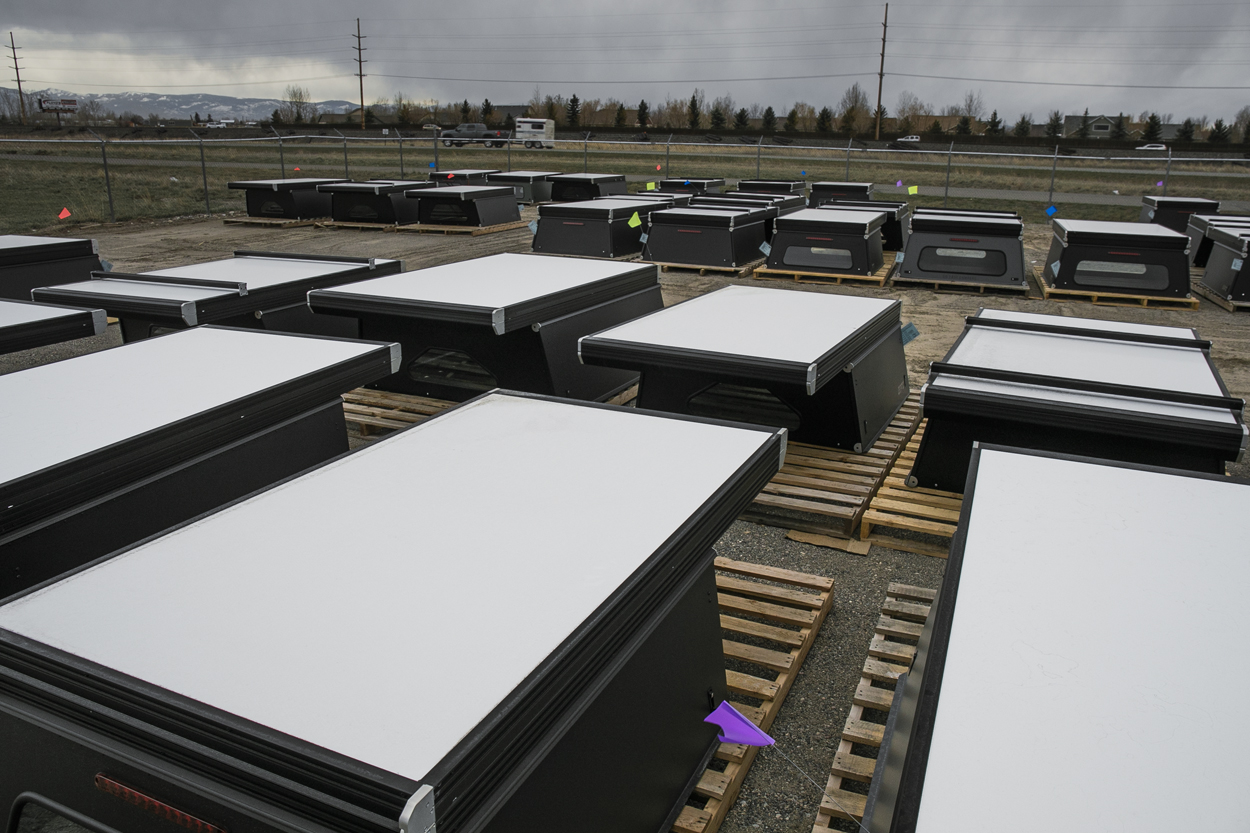
In 2017, two well equipped industry enthusiasts and specialists, Wiley and Graeme, leaned into a new idea. With a drive to create a new category of truck camper, they set out to build the first prototypes and thus the V1 was born. The idea took off, and I’ve watched GFC grow into a community staple and create a new market segment that is now often duplicated and inspires new companies to enter the space.
Their campers prioritized strength, fast setup, and a great base to build your off-road and off-grid setup on. Even today, while still a large investment, they offer an aggressive price point, and continue to release upgrades and new features. Most recently, the launched a Platform Topper and the new V2 Pro model. The V2 Pro emphasizes on addressing common complaints and adding new accessories and support from feedback after building over 8,000 of these units.
Graeme is now the sole owner and operator, with a growing team that is supported with great starting wages and benefits for their employees and a huge focus on reinvigorating US manufacturing. Current GFC products are exclusively made and assembled in their Montana headquarters. The company has built more than just a product, they’ve built a community. From hosting events to hand-on with new and existing customers, I love their approach and fully support their projects.
Initial Impressions
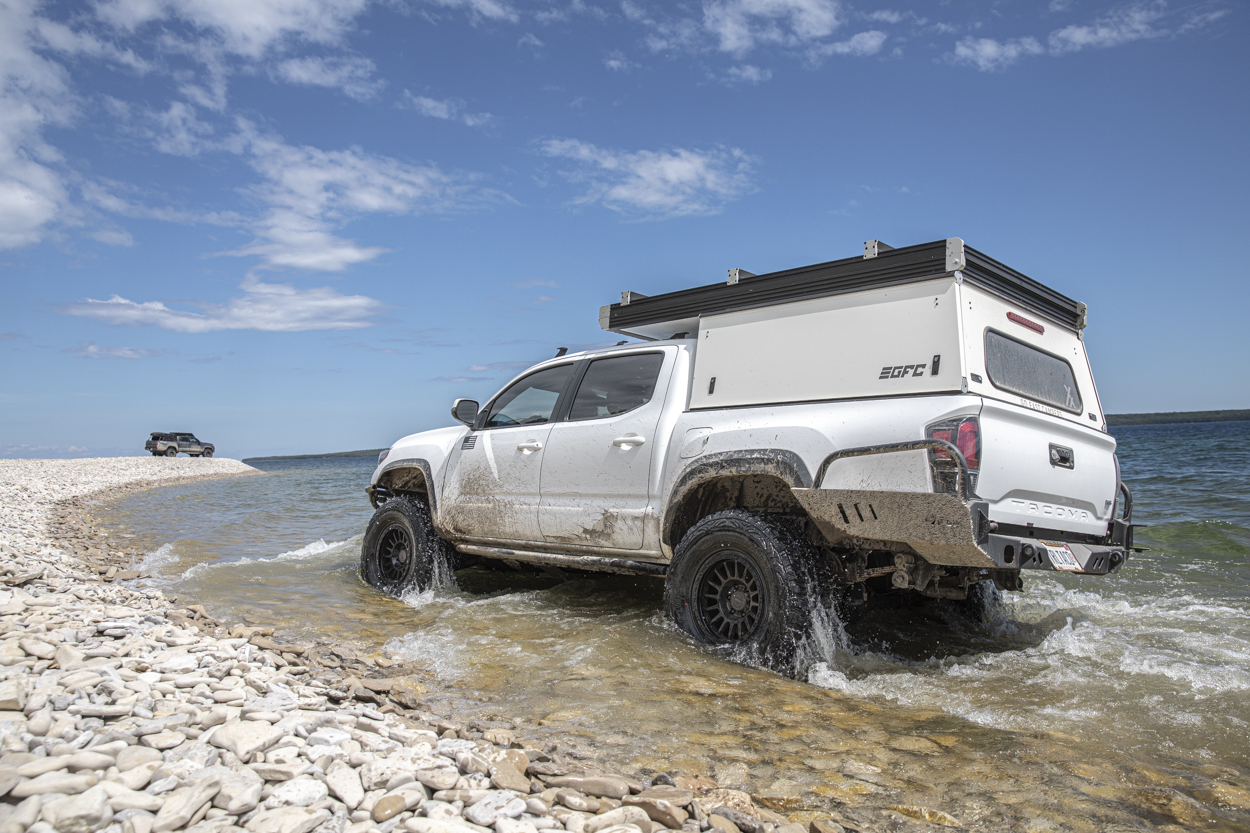
From the moment I first saw my camper waiting to be installed on my truck, the stoke level was high. We drove over 1,000 miles each way to make it happen. Montana is a beautiful state and I like to drive, so I didn’t mind the excuse to drive to pick one up. This was before they started remote installations at partner shops.
I had watched lots of videos and kept on forums threads and social media posts before I finally got mine installed. So I was pretty informed by install day. The design is modern and utilitarian, but it pairs well with a rugged looking Tacoma. It looks good on a stock truck too, but the overall aesthetic of a GFC on a built truck speaks to me, haha.
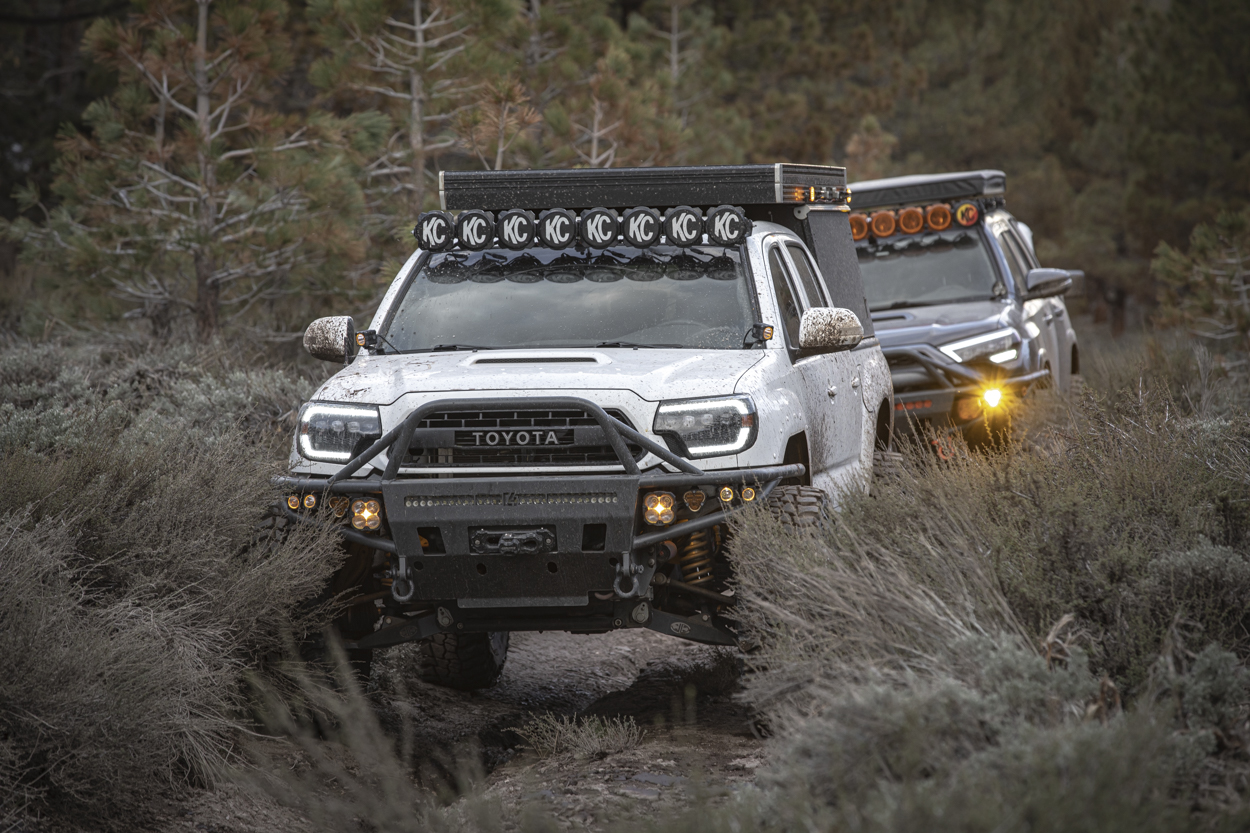
The materials and components look and feel good. There’s a quality that you see less frequently today and a human touch that is tough to replicate. The space frame is the shining design feature that makes this camper the strongest on the market. I usually don’t make loaded claims unless I’m absolutely sure.
And while I’m not calling out other brands, the fact is, the triangulated space frame design by nature lends itself to strength. Triangles are the strongest shape and incorporating them into the design is what allows insane weight capacity before failure. GFC tested this by putting an old truck on their new topper.
Daily Use & Practicality
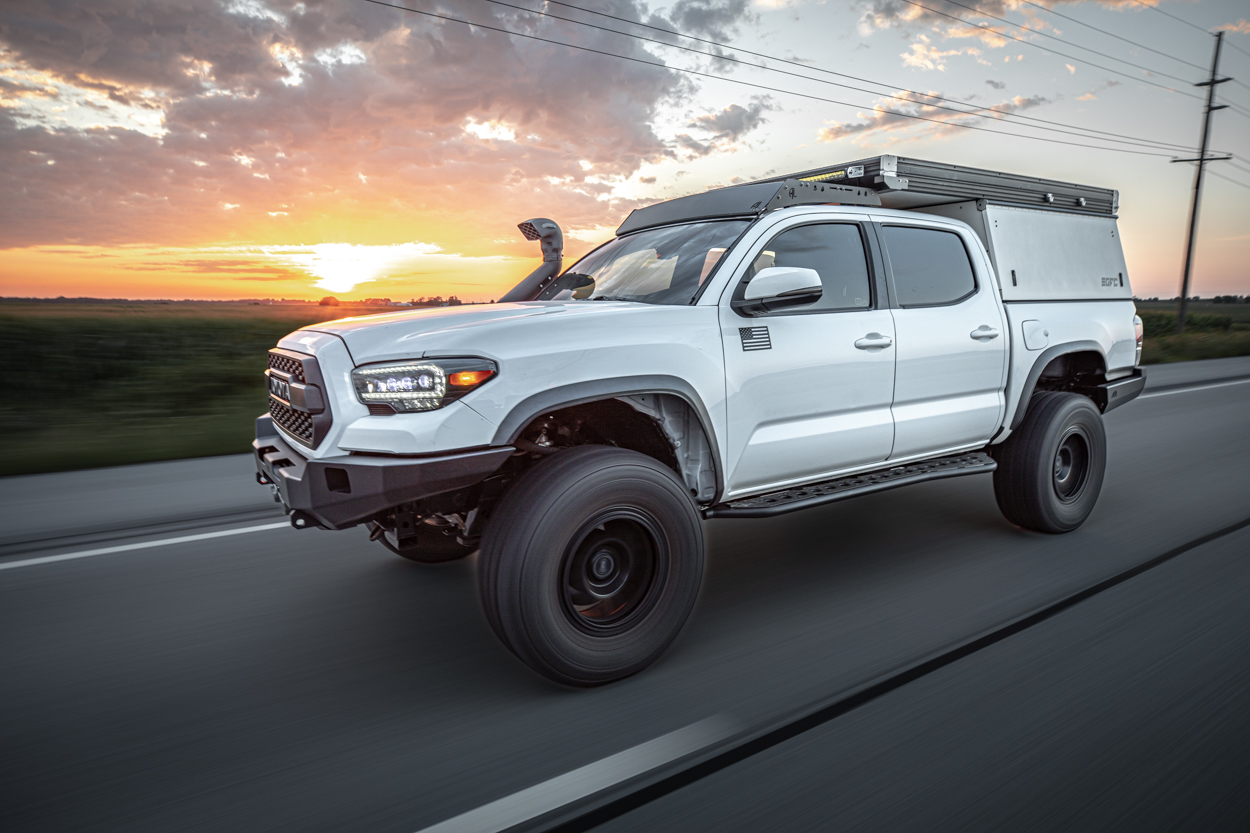
My truck is a daily driver. And I drive quite a bit. I know many people worry about how their truck will perform when building it up. How will the setup perform on and off-road? How will it affect MPG? Is it reasonable to drive around with a camper year round? I can confidently say that give the sizen and weight, while you definitely notice a difference in the previously mentioned questions, it’s very functional and isn’t a drag to use during normal daily activities. In fact, it lets you do rad stuff like set up a quick picnic at a local park, or function as a mobile work station.
At ~275 lbs., the overall weight is relatively low given the function. The Tacoma can certainly handle the camper by itself. And if you have other mods that add weight like armor, the driving experience can be supported in various ways like upgraded gears, better brakes and an engine tune. You’ll definitely notice a little bit of top heaviness, but the way the truck handles even if you’re a spirited driver, it doesn’t require dramatic adjustments to your habits.
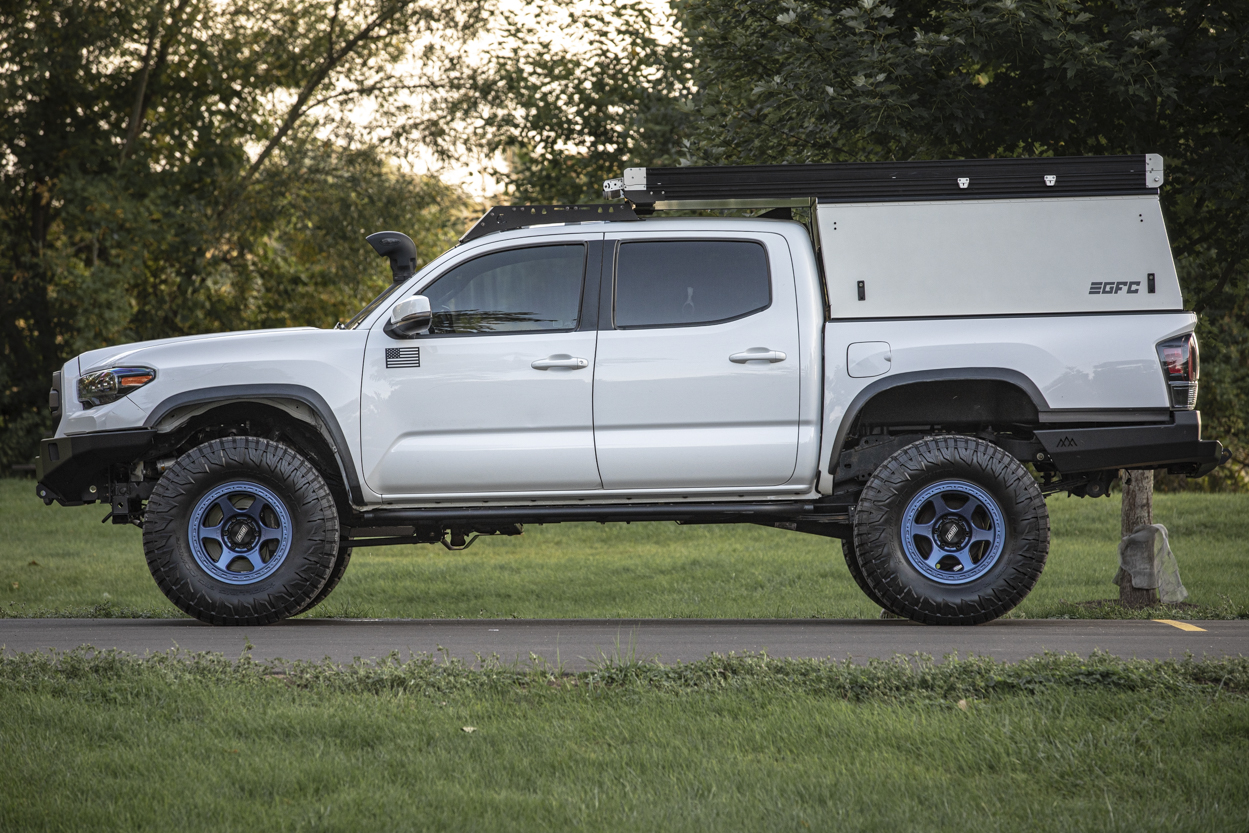
Your GFC truck will certainly draw positive attention, especially in areas where they aren’t as common. It’s a unique and good looking setup. I lost count of how many times I spoke with strangers and gave thorough tours.
The added height of the camper provides vertical bed space that stops right around where the top of the cab is. Can you carry super tall items like furniture? Maybe. It depends on how big whatever you’re transporting is, but the Tacoma isn’t a truck with a massive bed. So you can only fit so much in there. I don’t typically move large items, so it never bothered me. The GFC beef bars and flat top also made it easy to make a lumber run for home renovation projects.
All that said, is it practical for daily use? Depends on how you use your truck. But for most people, I don’t anticipate any issues.
Durability & Build Quality
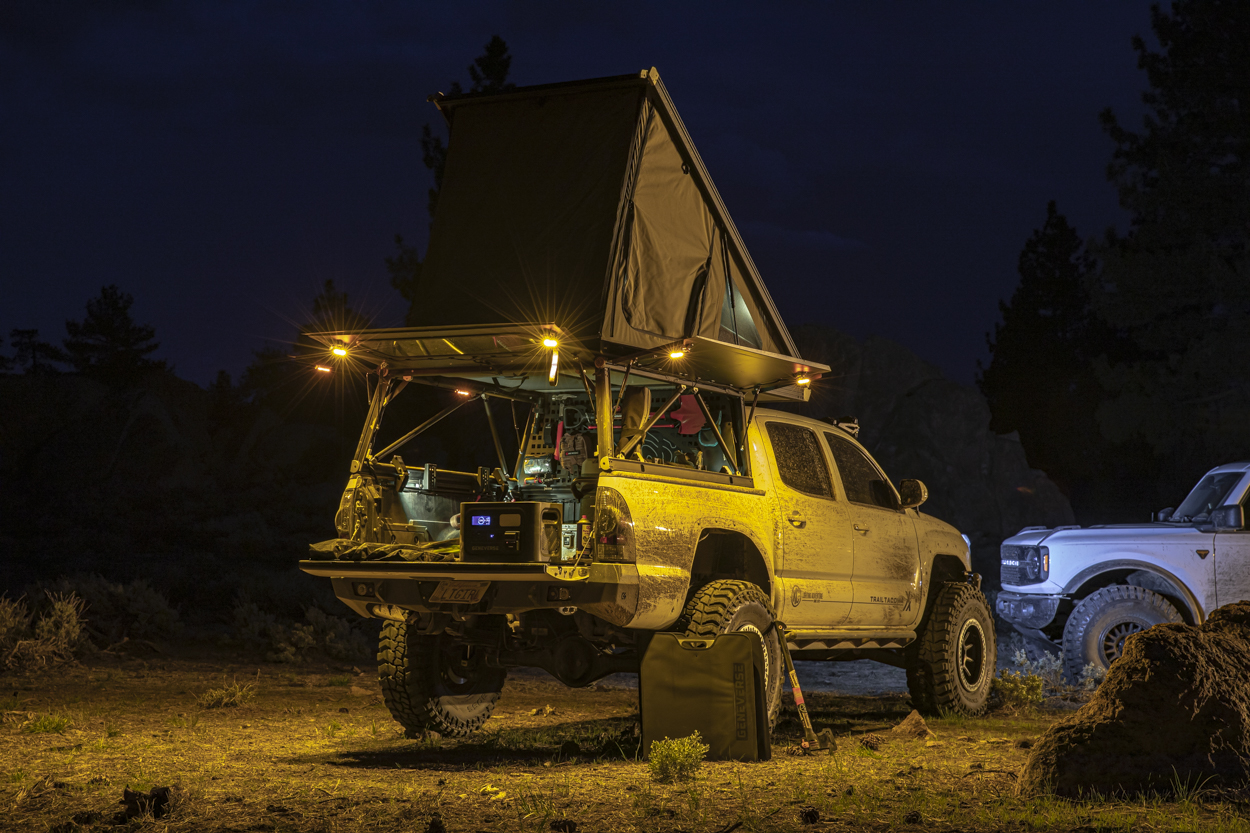
I drive trucks decently hard. I wouldn’t say I abuse them, but I definitely use them for what they were made for. Off-road driving and overlanding in general lends itself to increases in stress and strain on all your truck parts and mods. But in terms of stress testing, we wheel pretty hard and have continued to explore more difficult challenges and harder rated trails.
After over 50,000 miles and just about every condition you can imagine, our campers have seen it all. That includes anything from the hottest and driest of environments of remote desert areas in the summer, to the corrosive and cold winter environments found in the Midwest. I’m happy to say that with realistic expectations, the campers have never had any real issues and have remained just about as stout as they were brand new.
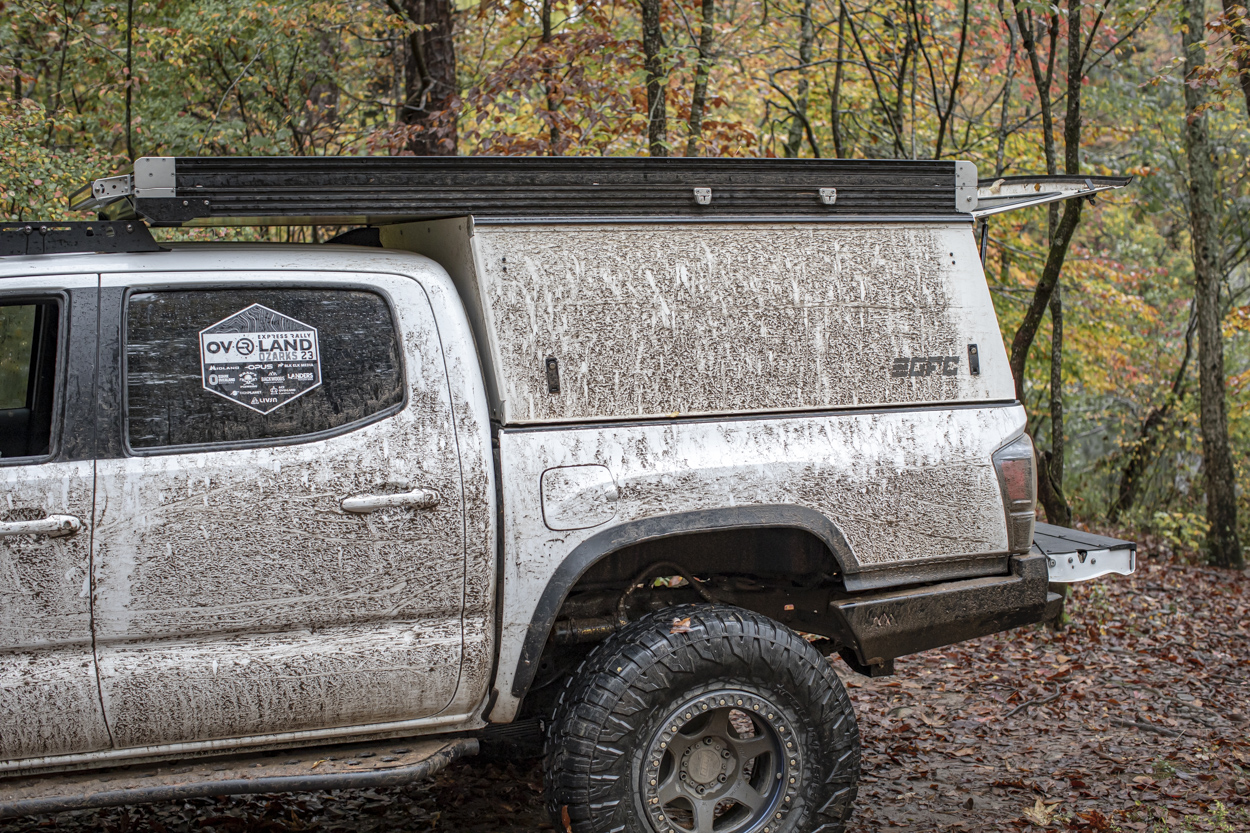
The only real maintenance was cleaning and adjusting the cord that holds the tent material into the structure. The warranty is great and GFC is very focused on customer support. Anytime I had a question or issue, my phone calls were answered immediately and solutions were sent over the same day. I’ve only had good experiences while talking with their team.
I added quite a few accessories to support my adventures. I covered that in a detailed post – GFC aftermarket accessories. While I utilized various GFC accessories like the ladder with the Mantis Claw and the light bar mounts, the majority of them were from brands built on mods that made the experience even better.
Off-Road Performance
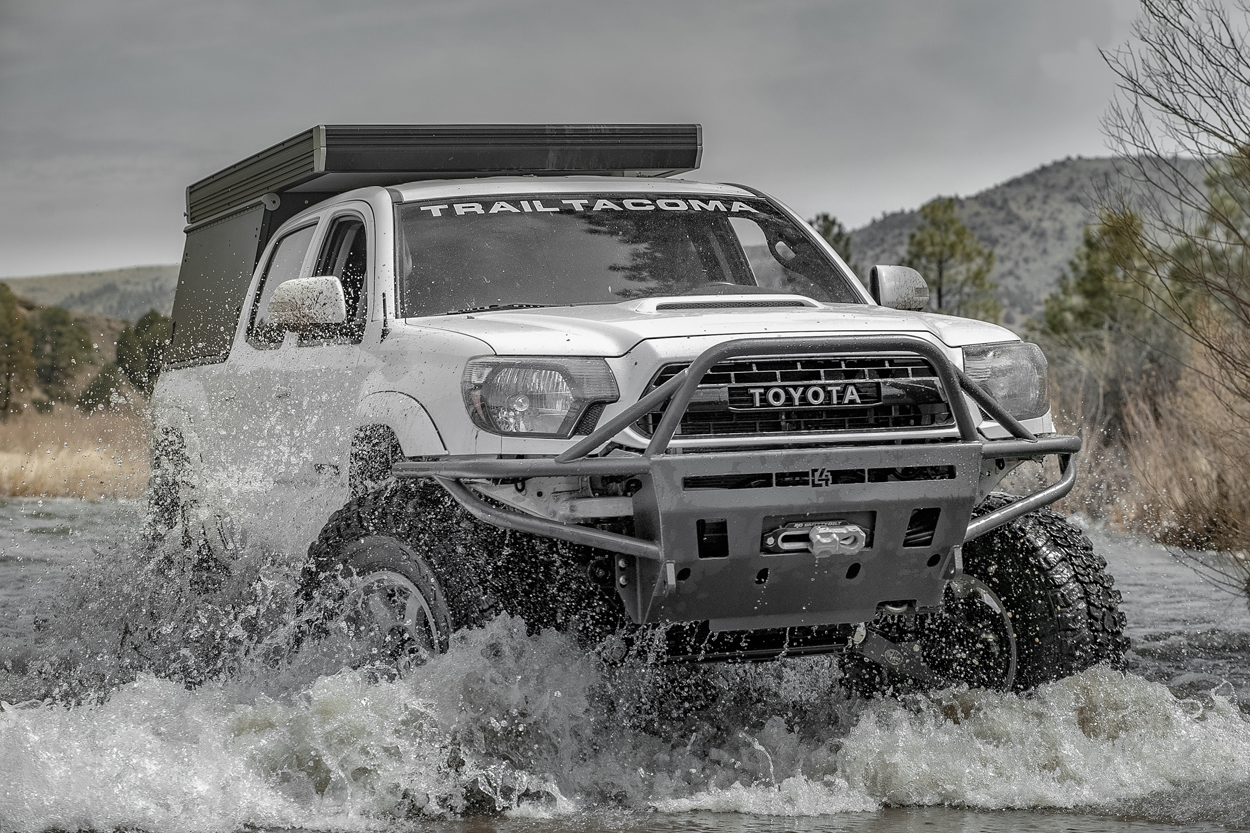
This section is mainly dedicated to how the camper has held up on the trails. And the answer is pretty simple. It hasn’t even blinked.
The mounting system is robust, made for heavy duty use. The design is crazy strong. I never had any issues with the camper shifting or making any kind of noise. I was never worried that it was going to succumb to harsh conditions.
I will say, the main thing to realize is that you have to be conscious of the size. This means being more careful on tighter trails and avoiding hitting something like a tree that overhangs a trail. I’ve rested the camper on a couple trees a handful of times while putting myself in precarious situations. Even when it did take some light contact, there wasn’t any damage to the camper or structure. Not to say it ever made serious contact.
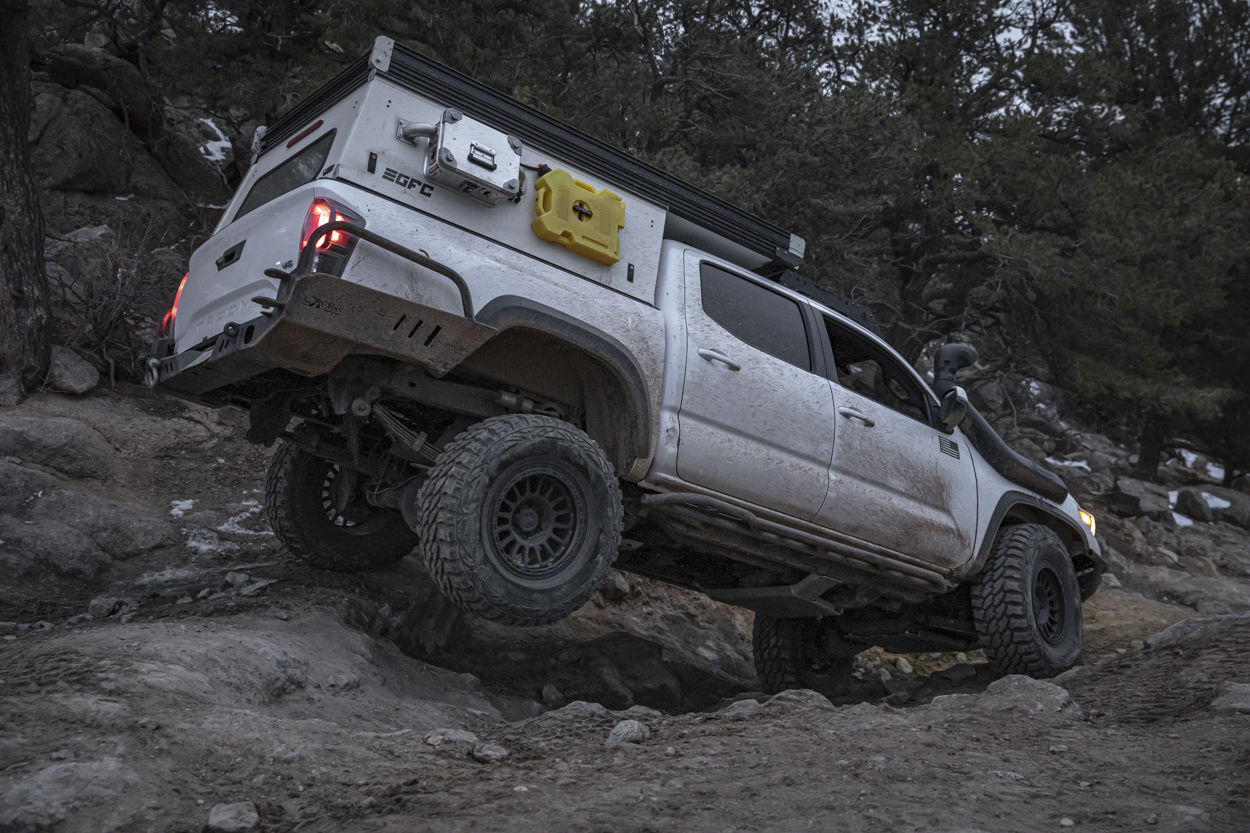
I’ve seen stories where a truck has a serious rollover accident and the GFC faired considerably better than the rest of the truck. I also saw a truck tip over, and the weight of the flipped truck was resting on the ground. Barely any movement, if any. The point is, most people will not use their setup to that extent. But if you did, you can be sure the camper can handle a lot of abuse.
I mentioned this earlier, but relative to it’s larger footprint and weight, I never felt it was really contributing to a feeling of greater instability on while crawling on steep angles over the rocks.
Function
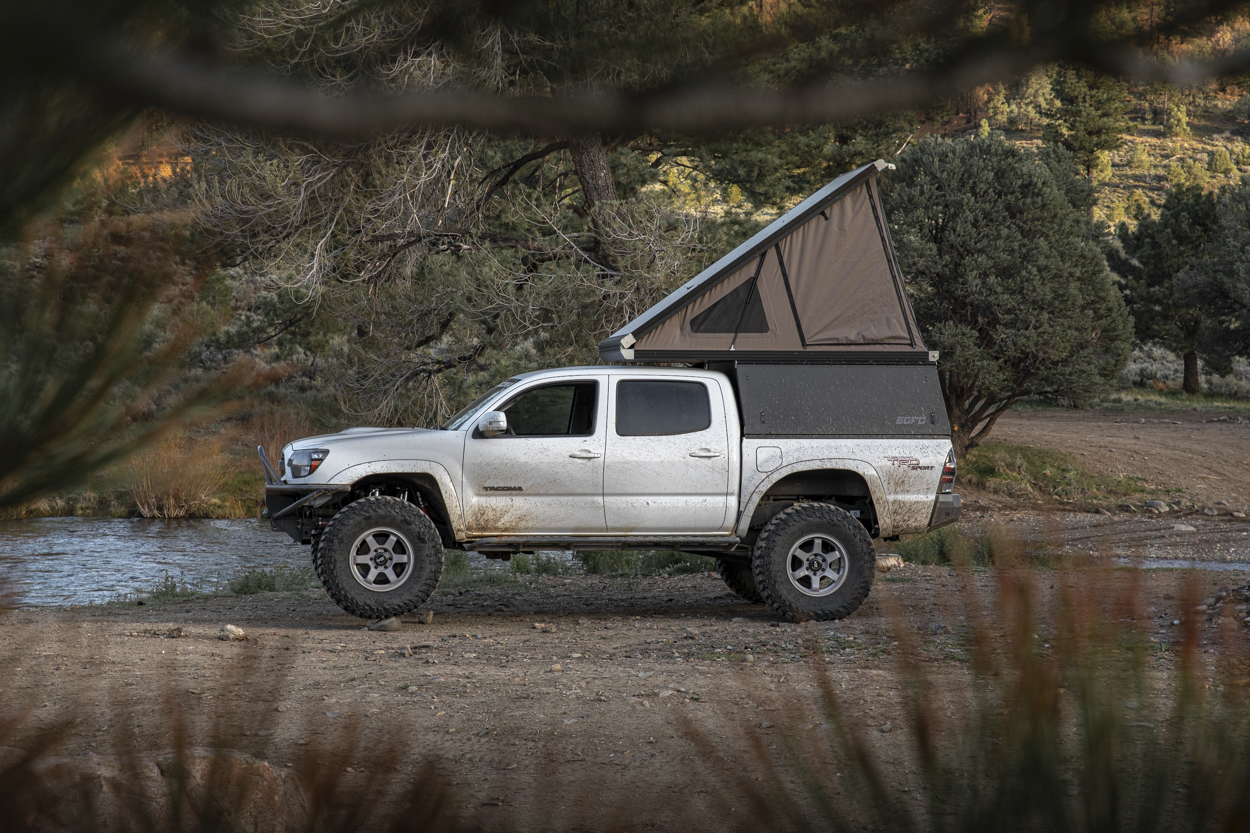
I frequently tell people, if you want the ultimate in functional overland setups, you’ll end up in a camper. The cost may sound prohibitive, but many people buy mods they might not necessarily need, like that super shiny race-inspired suspension. Not to say a good suspension doesn’t have a time and place. But for the majority of people, you’ll get way more use out of a solid camper setup than you will an expensive suspension.
Truck owners, especially Toyota owners, invest heavily in their rigs. If you go an alternative route, like a bed rack, RTT or anything comparable, you’ll likely end up with a final cost that’s similar (within reason) of justifying the investment to maximize efficient use. The speed and ease with which you can set up and break down camp is unmatched.
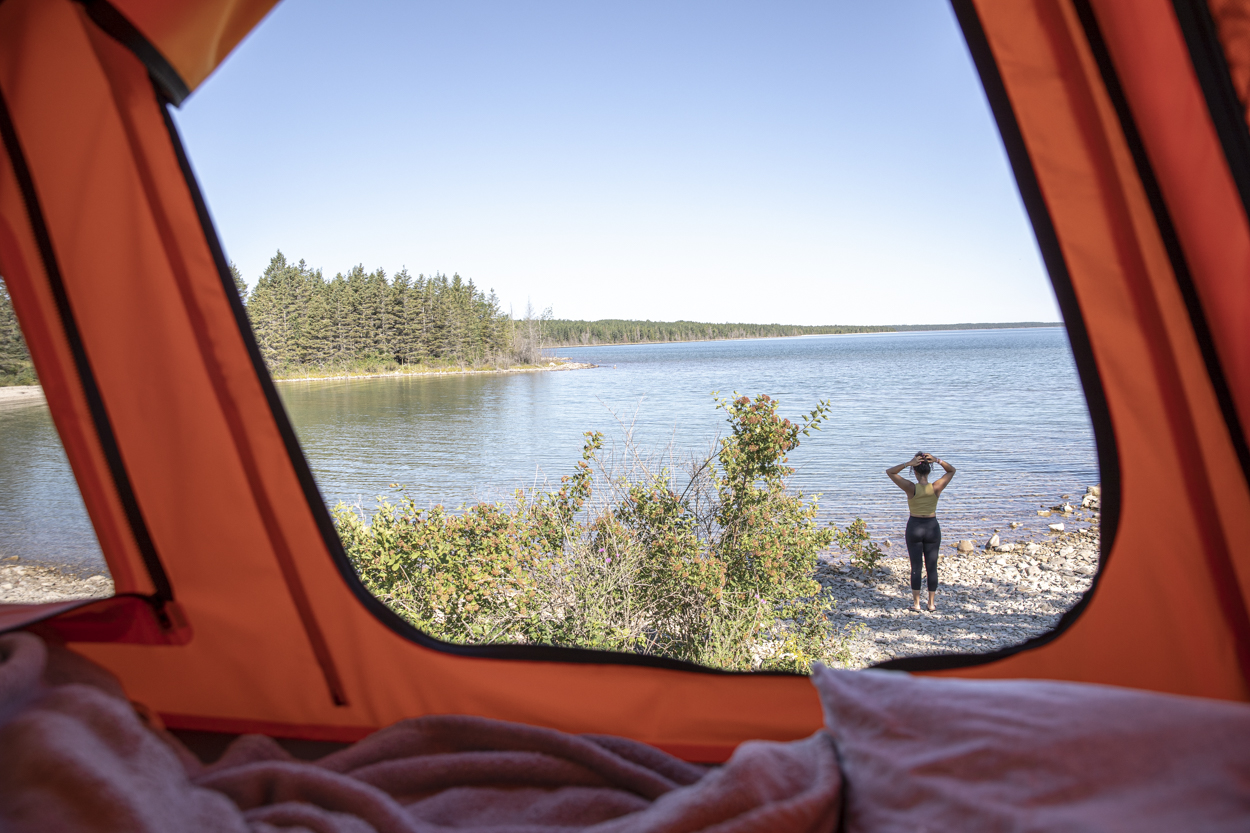
The removable panels allow for easy access through the bed and tailoring to your daily needs. The doors allow easy bed access from all available sides. The T-slot extrusions allow seamless accessory install. All in a compact package.
One of the best parts of building your GFC is the customization. Whether you choose GFC parts, aftermarkets ones, or you do something like build your own storage system, the fundamental camper base is made to grow with your needs. Oh, and having a covered bed just speaks for itself. Security for your gear, weather resistance, etc.
Camping
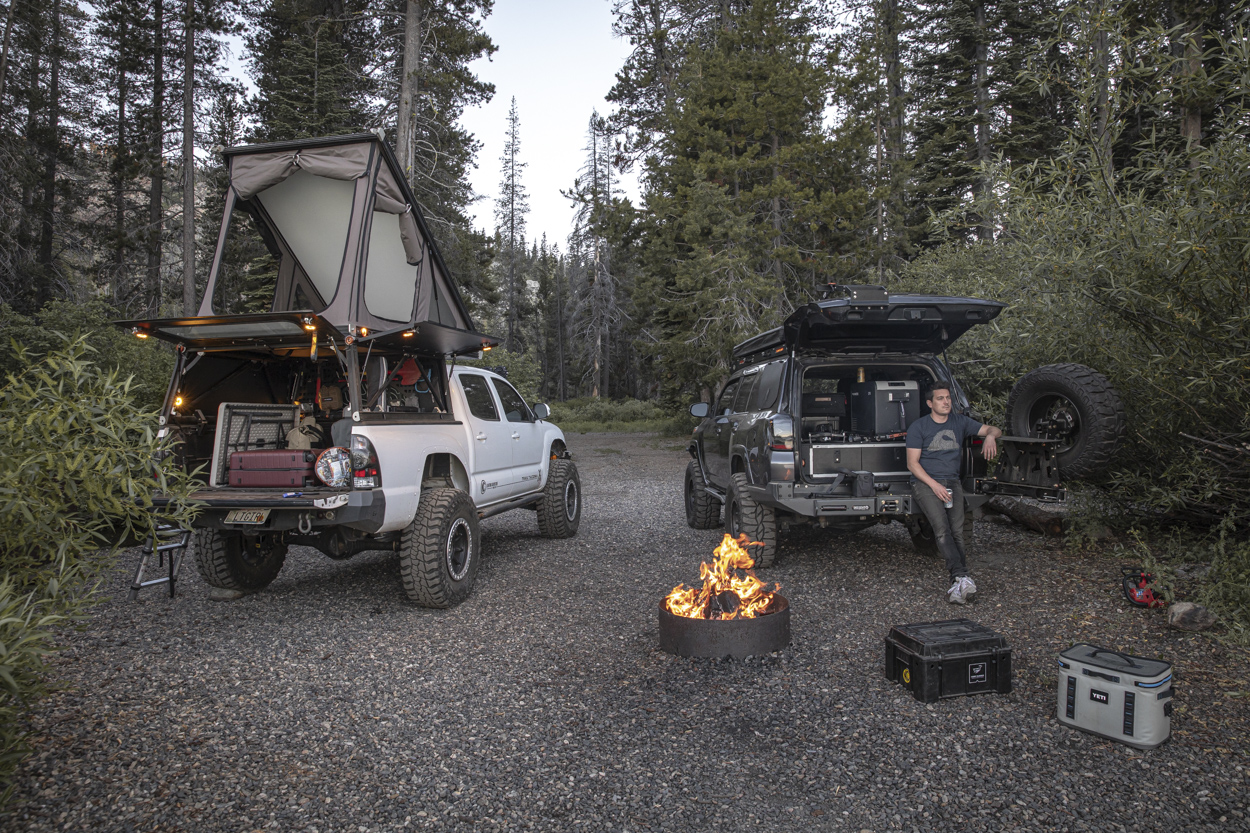
With several months worth of nights spent inside, I have no real complaints.
The mattresses have now been standard upgraded for a more comfortable sleep. The original ones were a bit too firm, but again, GFC addressed the problem. Even with the old mattress, I was always pretty comfortable. Add some flannel sheets, extra blankets and pillows, getting a good night’s sleep was never an issue.
The camper is weather resistant. I personally never had any leaking issues with either camper. The tent material and windows are awesome, and the experience was comparable with any other solid RTT I’ve used in the past. Mid size trucks have a sleeping area that’s 90″ tall by 50″ wide. The extra length is awesome. I’m 6’1″ and never had any issues. My wife and I slept together with our medium sized dog without any problems. I do wish it was a little bit wider, but that’s mainly a limitation of the truck and the focus on a streamlined design.
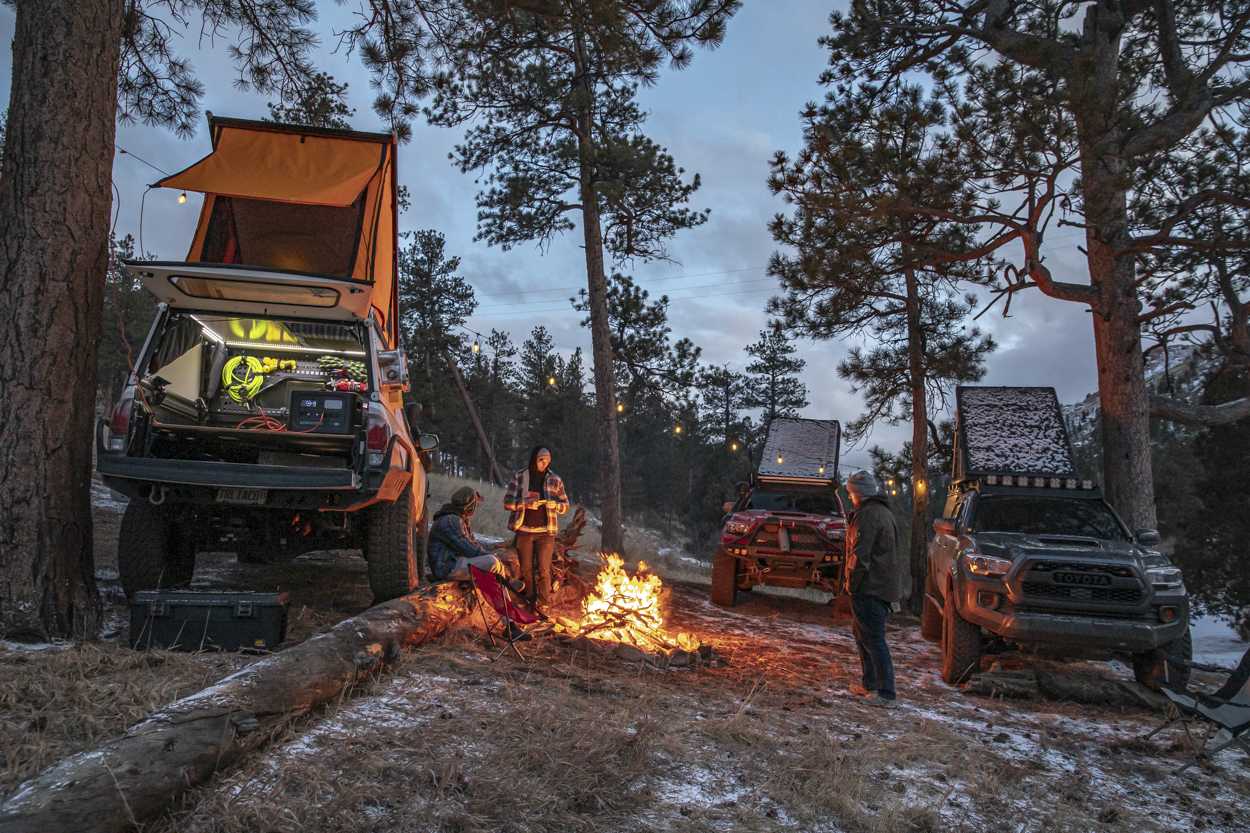
For cold weather, I added a Two Track Nation diesel heater. During winter camping, the low double digit temps were just as manageable as other sleeping setups I’ve experience. Without the heater, you just need more layers. An electric heating pad helps too. I wouldn’t recommend using something like a Buddy heater, but that’s out of extreme caution and bad stories you hear about carbon monoxide poisoning. The diesel heater was amazing. It was a completely different experience. In 15 degree snowy conditions, the camper was so warm I had to turn it down.
Overall, I enjoyed sleeping high off the ground and away from potential visitors from bugs or animals.
Lessons Learned
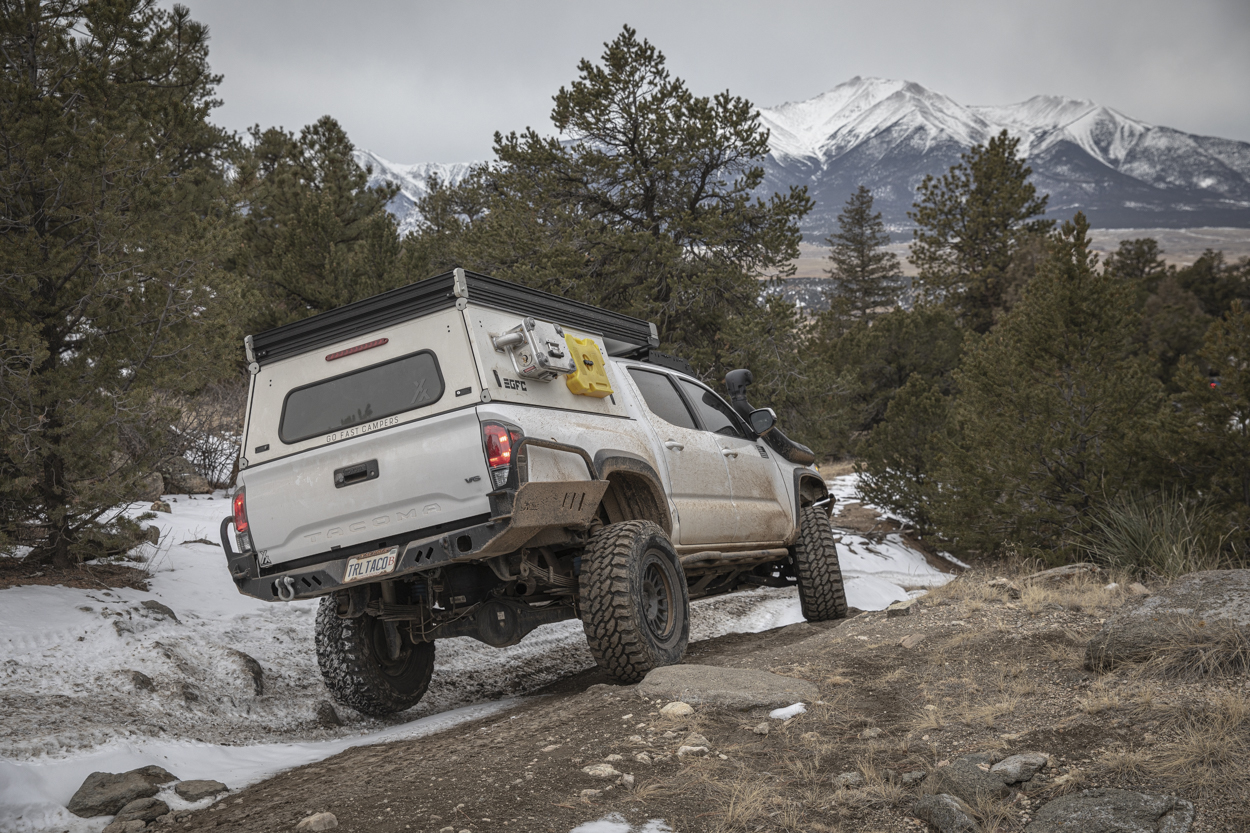
If I was going to do it all again, I wouldn’t change much. While I would like to take a crack at building my own drawer system one day, it was easier to find companies that were doing it at a high level. It took most of the 2.5 years to get the camper to it’s current state, but I can finally say it doesn’t really need much. Would I like to add more lights, maybe some recovery board mounts? For sure. But even as is, there is nothing to complain about.
Durability, speed, function, ease of use, an aesthetically pleasing (in my opinion) design, a weather resistant bed compartment, great support, an amazing community, an ambitious team – these are some of the main highlights from my experiences.
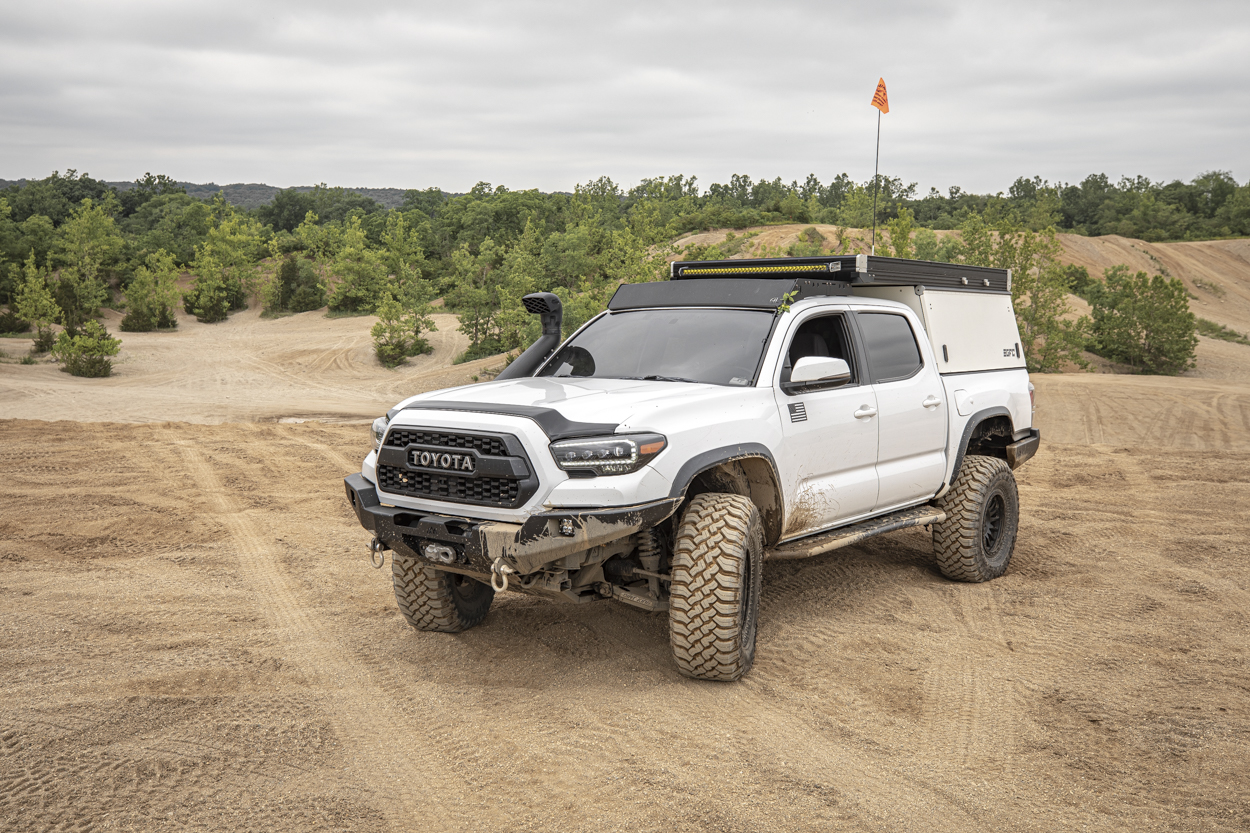
If you’re considering one of these, I would almost recommend the average potential user make this a first purchase before diving into other categories. The reason is simple. Considering most potential customers, you’ll get the most of out something like a camper.
I fully outfitted mine with all the options. Front and rear windows to get some visibility out of the back window, all the tent windows, etc. All of these are worth adding. GFC now offers cabinet modules that hang from the top of the inside of the camper. I would probably add one side if I had the chance.
My plan is to move into a new 4th Gen Tacoma soon. The plan is to replicate and refine this setup again on the new truck. I’m also considering a new high mileage 3rd Gen to convert into a dedicated trail rig that I don’t mind banging up. Maybe a simple bed rack with a SuperLite is the way to go there… Time will tell.
Final Thoughts
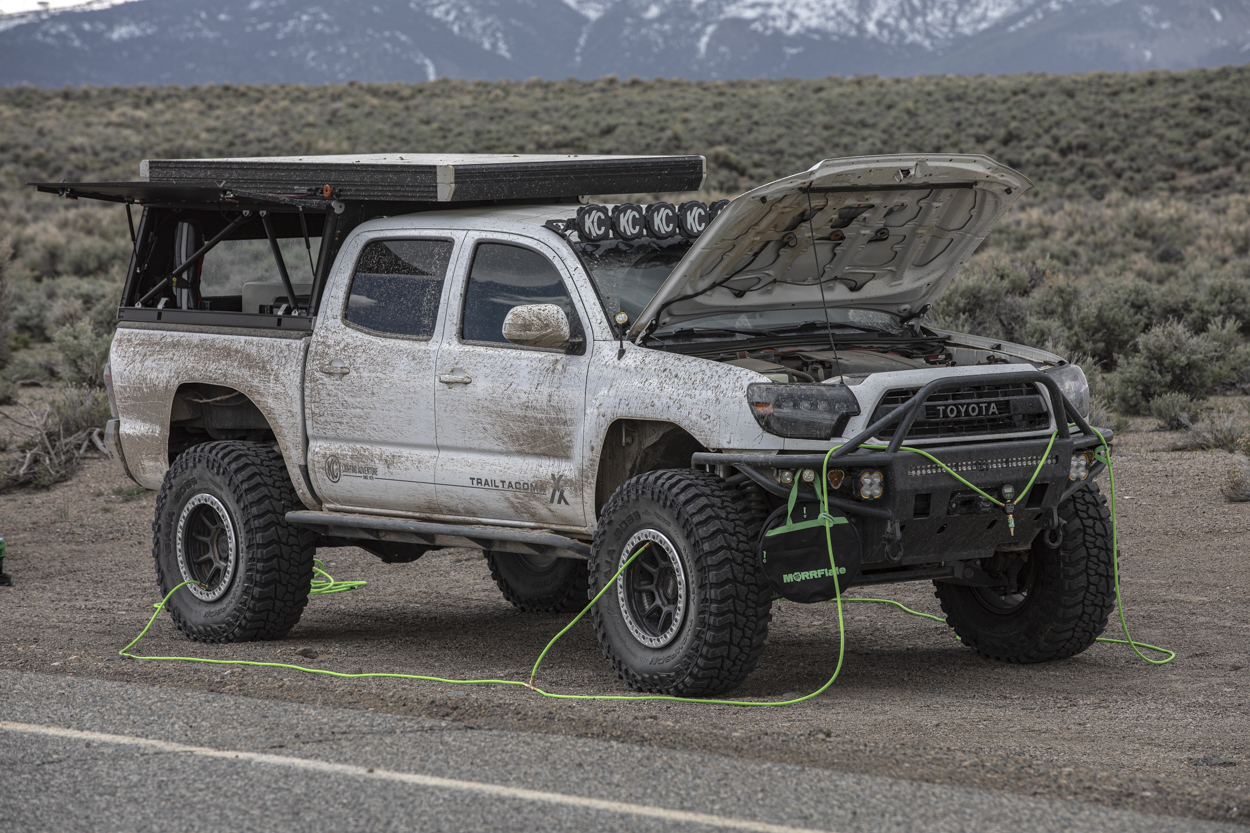
I try and not repeat myself too many times in these sections, since I think the message is pretty clear.
I have loved every minute of owning my camper. I don’t regret adding one in any way. With the recent upgrades and improvements, I see myself with some kind of GFC product on all my trucks over the long term.
Being in a unique position where I had access and was able to consistently use two of them, I think I offer a great window into what to expect from ordering all the way to outfitting and adventuring.
If you’ve been thinking about the best direction to go with your truck, I highly recommend you consider GFC.
Let me know if I missed anything, or if you have more specific questions!


The GFC is really the ultimate camper. It looks great and has tons of accessory options. Great post with tons of info!
As far as the “light and lean” category goes, no question! Thanks for reading.